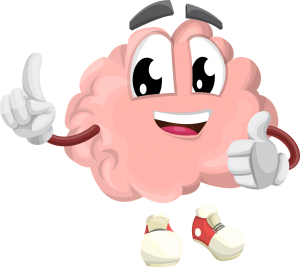 I am fascinated with learning science and loved an elective course I once took on neuroscience and learning. We actually had to read a neuroscience textbook as part of the curriculum – I say “had to” read, but I honestly ate it up – and having to make connections to learning . . . well, I was in “teacher Heaven.” While I don’t often refer back to my old neuroscience textbook (I still have it, just in case . . .) I do try to apply what I’ve learned in my study of brain-based teaching methods to any sort of workshop or meeting I am tasked with running. It turns out that good meeting practices are backed by neuroscience.
I am fascinated with learning science and loved an elective course I once took on neuroscience and learning. We actually had to read a neuroscience textbook as part of the curriculum – I say “had to” read, but I honestly ate it up – and having to make connections to learning . . . well, I was in “teacher Heaven.” While I don’t often refer back to my old neuroscience textbook (I still have it, just in case . . .) I do try to apply what I’ve learned in my study of brain-based teaching methods to any sort of workshop or meeting I am tasked with running. It turns out that good meeting practices are backed by neuroscience.
There are a lot of ways to promote creative, productive, and memorable meetings. Here are just a few ideas:
Have an agenda – The attention areas of our brain direct our responses to incoming stimuli, and we actually have a very limited capacity for processing multiple stimuli when they are competing for our attention (Sarter and Lustig, n.d.) Our brain also seeks out patterns to make sense of things (Bear, Connors, & Paradiso, 2007). Having an agenda helps maintain focus and attention because it provides the brain with a roadmap to follow. Silvia de Ridder (2016) suggests going further by writing your agenda items in the form of questions that invite participants to think about and contribute ideas and solutions to the meeting.
Promote security and comfort — The amygdala in our brains helps regulate our survival instincts, emotions, and memory. Helping meeting participants feel secure and positive promotes openness to learning, creativity, and memory enhancement. Ensure that all meeting participants feel not only physically safe, but also emotionally safe.
Having (and following) an agenda helps people feel secure by allowing them to know what’s going to happen next. Another way to help everyone feel secure, emotionally, is by standing at the door and greeting people with a smile as they walk in. This can lower anxiety and help them feel accepted and appreciated right away. Lowering anxiety and promoting positive feelings releases serotonin, a neurotransmitter that helps with memory and retention. Having snacks and water available also provides a level of security and comfort that allows participants to focus on the meeting and not worry about hunger or thirst.
Increase motivation by encouraging everyone to participate — Have a system in place that allows everyone to participate (sending the message that everyone’s input is valued). One way to do this is to place post-it notepads and pens on each table for people to jot down burning questions for a “Parking Lot” poster. Participants can post their questions in the parking lot and the facilitator can address the questions at some point during or after the meeting. That way, everyone has a chance to ask a question or make a comment, even if there is not an opportunity for them to speak due to time constraints. Depending on the type of meeting, you can also arrange seating, so participants are facing one another, or seated in small groups, so they can share ideas.
These are just a few strategies you can use to make everyone’s brain happy at your next meeting!
References:
Bear, M. F., Connors, B. W., & Paradiso, M. A. (2007). Neuroscience: Exploring the Brain (3rd Ed.). Baltimore, MD: Lippincott Williams & Wilkins.
deRidder, S. (2016, Jan. 28). Brain Based Meetings. [Blog Post]. Retrieved from http://www.unconsciouspotential.com.au/brain-based-meetings/.
Sarter, M. and Lustig, C. (n.d.). Attention and learning and memory. New Encyclopedia of Neuroscience (L.R. Squire, ed). Elsevier, Oxford, UK.
